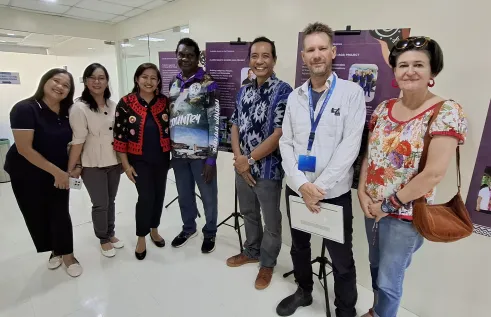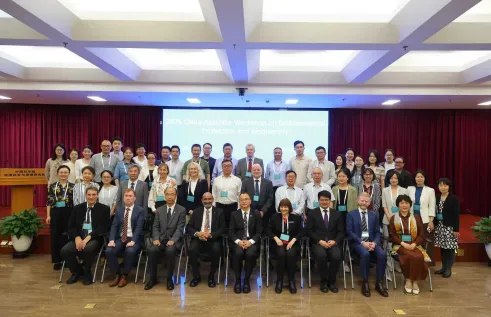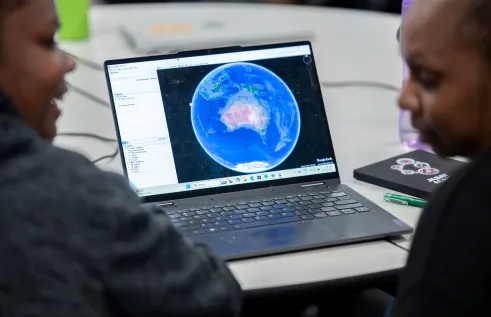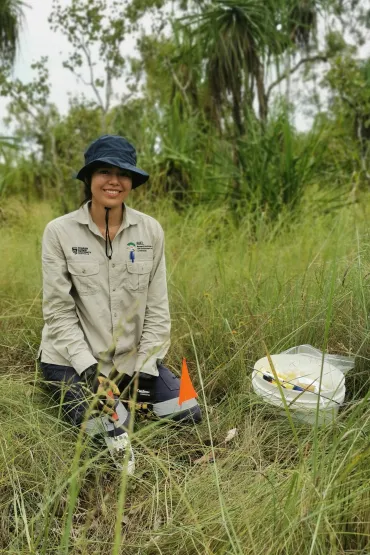RIEL news
Ants and innovation: using insect genetics to assess ecosystem restoration
A new research project at Charles Darwin University aims to take a genetic approach to using insects as indicators of ecosystem restoration.
Led by PhD candidate Allyson Malpartida, the project will use the often-overlooked animal group as a measure of ecosystem health, comparing the ant and termite communities of disturbed ecosystems undergoing recovery with relatively intact ecosystems.
The project is supervised by Profs Alan Andersen and Sam Banks and is a partnership with the Commonwealth Government through the Supervising Scientist Branch of the Department of Agriculture, Water and the Environment.
“Invertebrates are widely used as bioindicators because they are everywhere playing all kinds of ecological roles - they are very sensitive to environmental change.” says Ms Malpartida.
“Previously, invertebrate sampling has been avoided by many researchers as the sheer number of potential species makes identification daunting. We are trialling some recently developed genetic methods to see if we can make that process less daunting and therefore ensure invertebrate sampling is more often used in ecosystem rehabilitation.” She said.
Allyson’s project will assess the extent to which a method known as metabarcoding can reliably detect and identify the insect samples she has collected at her site.
“Metabarcoding involves sequencing the DNA from a whole bunch of species from our samples, then matching these sequences against a library of sequences from known species. Each one of the insect we collect has its own unique DNA, we just have to try and match to DNA we have on file.” Says Ms Malpartida.
As well as using DNA form ant and termite samples, Allyson will also try and identify insects from environmental DNA, known as eDNA.
“For eDNA we are getting our DNA samples from places like the soil, or even a termite bait, which has trace DNA left behind by the insects that move through or onto those substrates.” She said.
Through these methods, Allyson and her team hope to be able to detect and identify very large numbers of ant and termite species without having to sort through and identify each and every specimen collected.
“If successful, the use of invertebrates as bioindicators will no longer require a specialist entomologist to sit by a microscope and sort and ID thousands of specimens.” Says Ms Malpartida.
Once the methods are established and fine-tuned, the research team hopes they will have wide-ranging application to lots of types of disturbed ecosystems.
“A healthy ecosystem should have a healthy invertebrate population. Hopefully we can make measuring the health of invertebrate populations more accessible.”
This research project has begun sampling on the site of the former Nabarlek Uranium Mine in West Arnhem Land and involves ongoing collaboration with the traditional owners of that site. Her project also involves collaborations with CSIRO Land & Water and the Centre for Mined Land Rehabilitation at University of Queensland.
Related Articles

Environmental researchers and rangers visit Philippines as part of NT-Philippines exchange
CDU researchers and representative from Dhimurru Aboriginal Corporation completed a valuable exchange with Philippine leaders and rangers in June 2025.
Read more about Environmental researchers and rangers visit Philippines as part of NT-Philippines exchange
Professorial delegation discusses environmental protection and biodiversity in Beijing
Charles Darwin University (CDU) academics were among a high-level Australian delegation that visited the Chinese Academy of Sciences (CAS) last month.
Read more about Professorial delegation discusses environmental protection and biodiversity in Beijing
Rangers and PhD candidate unite at mapping workshop
How can technology support the revival of knowledge, its intergenerational transmission, and the defense of ancestral lands, all while ensuring cultural protocols are upheld?
Read more about Rangers and PhD candidate unite at mapping workshop
